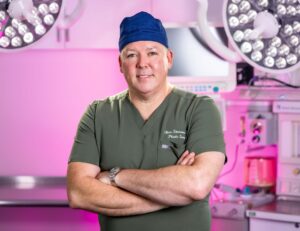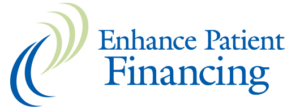frequent questions
The following are some of the most common questions and answers that our patients have made, if you do not find your answer here, feel free to ask us anything in the form provided and we will reply within 24hrs.

General questions
- Liposuction
- Tummy Tuck
- Brazilian Butt Lift
- Mommy Makeover
- Breast Augmentation with silicone implants
- Breast Lift
- Face and Neck Lift
- Upper and Lower Blepharoplasty
- JPlasma
Our clinic is located at 1790 SW 27 AVE MIAMI FL 33145.
Our clinic is staffed with an experienced team and a board-certified plastic surgeon who specializes in various cosmetic procedures. Our surgeon is Dr OP Simmons who is Triple Board Certified, has more than 25 years of experience, and has performed more than 15 000 surgical procedures.
Yes, we understand that cosmetic procedures can be a significant investment. That’s why we offer financing options to help make treatments more accessible. Please inquire with our staff for more information.

You must be financially prepared to pay for your final balance 15 days before surgery. You can pay with Cash, Cashier Check, Debit, Credit Cards or using Financing Card like Cherry on your pre-op day.
The anesthesia type chosen depends on factors such as the surgical procedure’s nature, duration, complexity, and the patient’s health. Local anesthesia involves applying numbing medication directly to the surgical area to reduce discomfort. Sedation entails administering intravenous (IV) medication to induce a state of reduced consciousness, often combined with local anesthesia to enhance comfort. While technically awake, patients under sedation may have limited or no memory of the procedure. Following sedation, a short recovery period is typically required before discharge.
In contrast, general anesthesia induces deep sleep, rendering the patient unconscious. An anesthesiologist administers drugs to depress the central nervous system, ensuring insensitivity to surgical pain and suppression of vital reflexes. Continuous monitoring by the anesthesiologist ensures patient safety throughout the procedure. Patients receiving general anesthesia are advised against driving or operating heavy machinery for at least 24 hours post-procedure.
Yes, if you have or had any of the following conditions you should inform your surgeon because a further evaluation may disqualify you from having a procedure with us:
• Beta Thalassemia DISEASE
• Chronic Obstructive Pulmonary Disease
• Congenital Heart Disease
• Coronary Artery Disease (CAD)
• Currently undergoing Chemotherapy
• Dialysis/Renal Failure
• Emphysema
• Factor V Leiden
• Family History of Malignant Hyperthermia
• G6PD Deficiency
• Heart Attack
• Heart Failure
• Kartagener Syndrome
• Kidney Transplant Recipient
• Malignant Brain Tumor
• Malignant Hyperthermia
• Marfan Syndrome
• Mini Stroke (TIA)
• Myasthenia Gravis
• Pacemaker AICD
• Pseudo Cerebri
• Sickle Cell DISEASE
• Spinal Cord Stimulator
• Stroke
• Transient Ischemic Attack
• Von Willebrand Disease
Surgery Questions
Certain patients may be eligible for combination procedures such as the Mommy Makeover, which involves pairing a tummy tuck with a breast lift, reduction, or implants.
We are also able to combine Brazilian Butt Lifts (BBL) with other procedures, however, safety regulations restrict us to removing a maximum of 1 liter of fat, which may not be adequate to achieve desired outcomes when combined with other procedures.
Cell saver is a device used in surgery. The device collects the blood you lose during your surgery, cleans the blood and returns the blood back to you.
The machine is only used for procedures that involve liposuction because liposuction puts the body at risk for an increased amount of blood loss. Typically, patients are ableto recover from blood loss during lipo easily and without complications, but certain patients will need to use cell saver to guarantee their safety during and after the procedure.
Cell saver is available for patients whose hemoglobin comes back between 11.0 and 11.9 in their required blood work. A cell saver allows these patients to get the good red blood cells they need back into their body in order to heal properly after their procedure.
Patients who are having liposuction or a fat grafting procedure like a BBL will be
informed if they qualify for cell saver ahead of their procedure.
The duration will vary based on the intricacy of the procedure. An approximate timeline typically unfolds as follows:
| Brazilian Butt Lift | 2.5 hours |
| Breast Lift | 3 hours |
| Mommy Makeover | 4.5 hours |
| Breast Implants | 1 hour |
| Tummy Tuck | 1.5 hours |
| Liposuction | 2 hours |
While visible scarring may occur following many procedures, we take great care in meticulously closing all incisions, considering it a crucial aspect of the surgery. We are committed to employing techniques that promote optimal scar healing, aiming for scars to eventually become virtually imperceptible.
Patients who diligently adhere to post-operative instructions regarding incision care, activity resumption, and refrain from smoking typically experience favorable scar outcomes.
However, some individuals may naturally develop large, pink, or dark scars, influenced by genetic factors. Although rare, in cases where undesirable scarring occurs, options such as scar revision surgery, dermabrasion, or laser scar therapy can be pursued.
The duration of time needed varies significantly depending on the type of procedure and the nature of your work. For instance, some procedures may necessitate only a few days off, particularly if the work is sedentary. Conversely, patients undergoing more extensive procedures like a full facelift or lower body lift may require additional recovery time.
Typically, after 2 to 3 weeks, many patients can resume light work duties. However, specific instructions tailored to each patient will be provided regarding their return to work and engagement in activities like exercise.
While most patients experience a modest reduction in weight due to fat removal during liposuction, their overall weight typically remains close to normal after the surgery.
It’s crucial to understand that liposuction is not a substitute for adopting a healthy lifestyle; rather, its purpose is to address stubborn fat deposits resistant to diet and exercise.
Liposuction is primarily a body contouring procedure and should not be considered a method for weight loss.
The duration of your stay at the facility during the surgical process varies depending on the type of surgery you undergo. Typically, procedures last between 1 and 6 hours. Additionally, you should factor in the post-operative recovery period, which generally ranges from 45 minutes to 2 hours.
Pre-Op questions
We acknowledge the importance of ensuring patients have everything prepared before surgery to alleviate concerns during the recovery period. However, your surgeon will give you your prescriptions at the end of your last Pre-op session the day before your surgery.
- Comfortable clothing, preferably one size larger than your current size, to accommodate swelling. Front-buttoned options are recommended, especially for breast procedures, as arm movement may be challenging
- Comfortable shoes that are easy to slip on and off, as bending over or straining may be difficult due to post-operative pain.
- Stock your pantry with soups, gelatin, fresh fruits, and vegetables to address potential constipation or dizziness post-surgery.
- Purchase water and hydrating drinks to ensure proper hydration after the procedure. Aim to consume around 2 liters of water daily following surgery.
- Consider buying Arnica cream, known for relieving pain, bruising, swelling, and aiding in faster wound healing.
One of our main missions is to explain how the Pre-Op process works. All details are very relevant, please review this document that contains all of our Pre-Op requirements:
We do not actually have a max body weight for our procedures, we use the BMI (Body Mass Index) to determine if a patient is ellegible for surgery. To learn more about BMI tap on the link below:
The day of your surgery you should bring as least items as possible, although we recommend to bring a clean (Preferably new for sterilization) bathrobe with a Pair of Slippers to be worn after surgery.
Post-op Questions
The time you should use your fajas is relative to the procedure that you had, although it usually takes up to 3 months. In these 3 months you will be changing your faja or compression garnment depending on the period of healing that you are, your faja should be always tight, give us a call if you have any doubs about how to use your fajas.
Sleep on your back in bed with ample pillows for support. If reclining in a chair isn’t feasible, replicate the same position on your bed by using pillows to elevate your legs, head, and back.
In case a tummy tuck is included in your Mommy Makeover, your abdominal area might feel tight, making it uncomfortable to lie completely flat on your back or side. Elevating your head, chest, and knees while in bed can mimic the reclined position of a chair, offering comfort and support.
You cannot sit at all for three weeks. After this period you can use your BBL Pillow and only after twelve weeks you can sit down directly on your buttocks.
Your final surgery results start to come up after 3 to 4 months. This depends on the procedure and the healing process.
Brazilian Butt Lift (BBL)
Liposuction
Tummy Tuck (Abdominoplasty)
Breast Implants (Augmentation Mammoplasty)
Breast Reduction
Breast Lift (Mastopexy)
A breast lift raises and reshapes sagging breasts by removing excess skin and tightening surrounding tissue.
Breast Reconstruction
Mommy Makeover
Facelift (Rhytidectomy)
Neck Lift
Eye Lift (Blepharoplasty)
Rhinoplasty
Brow Lift
The surgery typically lasts 1-2 hours.
Contact Us
Talk to the doctors today!
Fill out this short form to get a FREE Consultation.
By submitting this form you are subject to our privacy policy rights and concents.


